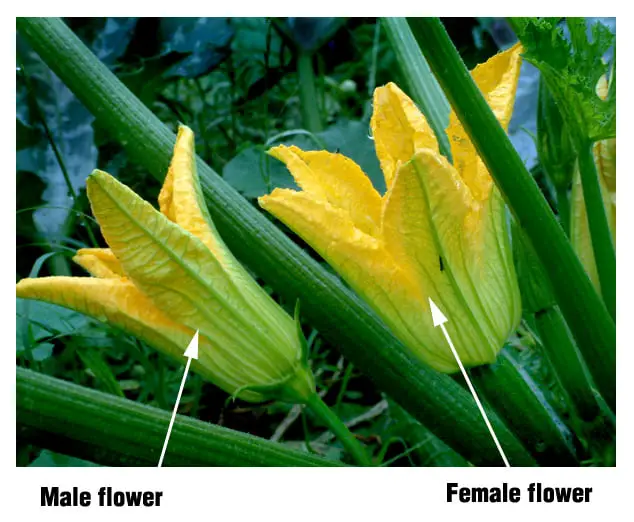The identification of the gender of a zucchini can be a perplexing task for many gardeners. While zucchinis do not possess the traditional gender characteristics found in animals, they do exhibit subtle differences that can reveal their male or female nature. By closely examining the flower and stem of the zucchini plant, one can decipher its gender with precision and ensure optimal pollination for a bountiful harvest. In this article, we will explore the distinctive traits that enable you to determine whether a zucchini is male or female, providing valuable insights for avid growers and curious enthusiasts alike.
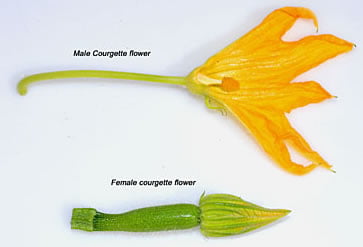
Physical Characteristics
Flower Appearance
The flowers of zucchini plants are vibrant and eye-catching, with a bright golden yellow hue. These flowers are relatively large, typically measuring around 2-3 inches in diameter. They have five distinct petals and a prominent central structure known as the flower’s reproductive organs. The flowers are delicate and have a soft, velvety texture, which adds to their aesthetic appeal.
Stem Length and Thickness
Zucchini plants boast sturdy and robust green stems that provide support for the flowers and fruits. The stem length can vary depending on various factors such as the specific zucchini variety, environmental conditions, and plant age. On average, the stem length ranges from 1 to 4 feet, with some exceptional cultivars having even longer stems. The thickness of the stem correlates with its strength and stability, ensuring that the plant can withstand the weight of the fruits.
Fruit Shape and Size
Zucchinis are known for their characteristic cylindrical shape, resembling elongated cucumbers. These fruits have a smooth and glossy skin, ranging in color from deep green to light yellow, depending on their maturity. The size of zucchinis can also vary, with lengths typically ranging from 6 to 12 inches. However, some cultivars may produce smaller or larger fruits. It is important to note that zucchinis are usually harvested when they are still relatively young and tender, as they become tougher and less flavorful as they mature.
Flower Types
Male Flowers
Zucchini plants produce both male and female flowers, each with distinct characteristics and roles in the pollination process. Male flowers, as the name suggests, contain the male reproductive organs, specifically the stamens. These flowers are typically more abundant than female flowers and can be identified by the absence of a small swelling at the base, which is indicative of the ovary. Male flowers possess a long and slender stem, allowing them to extend outwards from the plant to maximize exposure to pollinators.
Female Flowers
In contrast to male flowers, female zucchini flowers house the female reproductive organs, including the pistil. These flowers can be distinguished by the presence of a small swelling at the base, which will develop into the zucchini fruit if successfully pollinated. Female flowers usually have shorter and thicker stems compared to their male counterparts, allowing them to remain close to the plant for adequate nourishment and protection.
Hermaphrodite Flowers
While not as common as male or female flowers, zucchini plants occasionally produce hermaphrodite flowers, which contain both male and female reproductive structures. These flowers possess both stamens and pistils and have the potential to self-pollinate, meaning they can fertilize themselves without the assistance of external pollinators. Hermaphrodite flowers can be advantageous in scenarios where pollinator availability is limited or when specific growing conditions may hinder successful pollination.
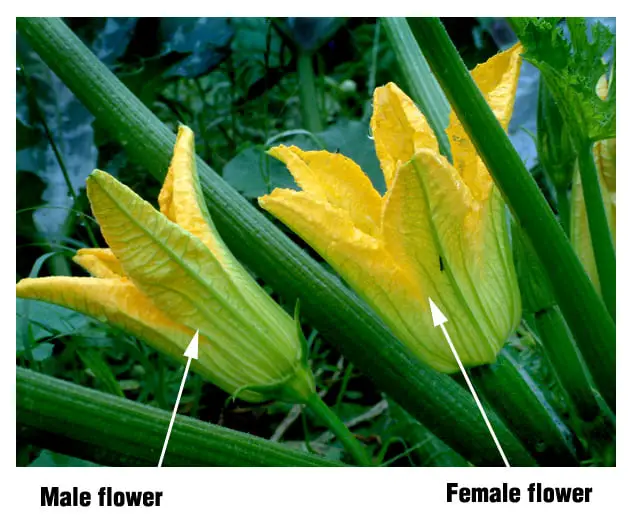
Flower Anatomy
Pistil
The pistil is the female reproductive organ found within the zucchini flower. Composed of three main parts – the stigma, style, and ovary – it plays a crucial role in the pollination process. The stigma is the uppermost portion of the pistil, serving as the receptive surface for pollen grains. The style serves as a passage for the pollen to reach the ovary, which contains the ovules. The pistil’s intricate structure ensures efficient fertilization, leading to fruitful zucchini production.
Stamen
The stamen is the male reproductive organ within the zucchini flower. Consisting of two main parts – the anther and filament – it plays a crucial role in producing and releasing pollen. The anther serves as the site of pollen development, containing the pollen sacs that house the microscopic grains. The filament, a slender stalk, supports the anther, allowing it to be elevated and exposed for optimal pollen dispersal. The stamen’s production and release of pollen are vital for successful pollination and subsequent fruit formation.
Pollination Process
Insects and Wind
Zucchini plants employ both insects and wind as pollination agents to transfer pollen between male and female flowers. Insects, particularly bees, are attracted to the bright, showy flowers and are essential for effective cross-pollination. As bees collect nectar, their bodies come into contact with both the male and female reproductive structures, resulting in the transfer of pollen. Wind, on the other hand, aids in the dispersal of pollen within the same plant or between nearby plants. The structure of the zucchini’s flowers, such as the exposed stamens, facilitates wind-mediated pollination.
Self-Pollination
Zucchinis also have the ability to undergo self-pollination, whereby pollen from the stamen of a flower is transferred to the stigma of the same flower or a neighboring flower on the same plant. This process occurs naturally within hermaphrodite flowers or when the timing of male and female flower maturity aligns. Self-pollination provides zucchini plants with an added advantage, ensuring reproductive success even in the absence of external pollinators.
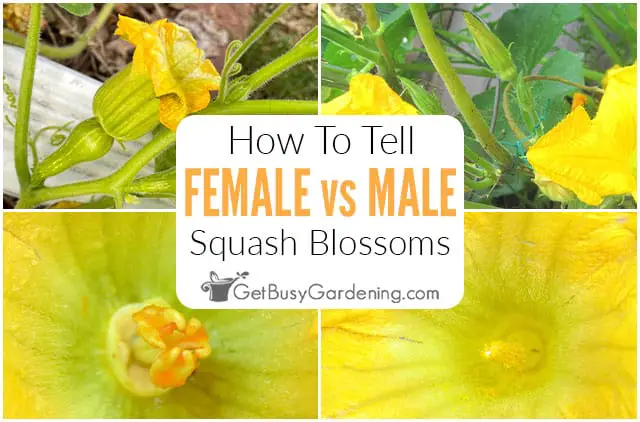
Pollination Techniques
Hand Pollination
In cases where pollinator activity is limited or inconsistent, hand pollination can be utilized to increase the chances of successful fertilization. Hand pollination involves manually transferring pollen from the stamen of a male flower to the stigma of a female flower. To perform hand pollination, carefully collect pollen from the anthers using a small brush or your finger and gently brush it onto the stigma of the female flower. This technique ensures that the flowers receive the necessary pollen for fruit development and can be particularly useful in greenhouse or controlled environments.
Using Cotton Swabs
An alternative method for hand pollination involves using cotton swabs. By gently swabbing the anthers of male flowers, pollen can be collected and then transferred to the stigma of female flowers. Cotton swabs provide a practical and accessible tool for pollination, ensuring that the necessary pollen is delivered to the rightful destination. This technique can be employed in both outdoor and indoor cultivation settings, providing control and assurance in the pollination process of zucchinis.
Fruit Development
Rate of Growth
After successful pollination, zucchini fruits begin to develop and grow. The rate of growth can vary depending on various factors such as temperature, water availability, and plant health. In ideal conditions, zucchinis can exhibit rapid growth, with noticeable changes occurring within a matter of days. However, it is important to monitor the fruits closely, as prolonged periods of high heat or water stress can hinder their growth, resulting in smaller and potentially misshapen zucchinis.
Fertilization
Fruit fertilization in zucchinis occurs following successful pollination. When pollen is transferred from the male flower to the stigma of the female flower, it travels down the style to reach the ovary. The fertilized ovules within the ovary develop into seeds, while the surrounding tissue expands and matures, eventually forming the zucchini fruit. Adequate pollination and subsequent fertilization are crucial for optimal fruit development and quality.
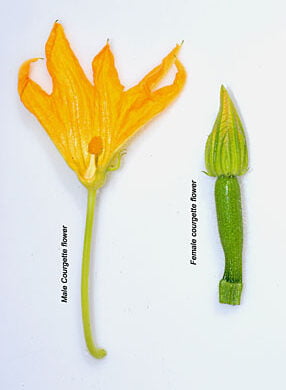
Harvesting Tips
Timing
Knowing when to harvest zucchinis is essential to ensure they are at their peak flavor and texture. Zucchinis should be harvested when they are relatively young and tender, typically around 6-8 inches in length. Waiting too long to harvest can result in larger, but tougher and less flavorful fruits. Regular monitoring of the zucchini plants is crucial to identify fruits that are ready for picking and to avoid unnecessary delays that can compromise overall quality.
Fruit Color
The color of zucchini fruits can also serve as an indicator of their readiness for harvest. Generally, zucchinis are harvested when they exhibit a vibrant and uniform green color. However, certain varieties may have unique color characteristics, such as pale yellow or striped patterns, depending on their genetic makeup. Regardless of the specific color, consistency and absence of blemishes or discoloration are important factors to consider when determining the optimal time for harvesting zucchinis.
Culinary Considerations
Taste and Texture
Zucchinis possess a mild and subtly sweet flavor, making them versatile ingredients in various culinary preparations. Young zucchinis are especially tender, with a delicate, almost creamy texture. As zucchinis mature, they become firmer and develop a slightly denser texture. The taste and texture of zucchinis make them suitable for both raw consumption in salads and cooked applications such as sautéing, grilling, baking, and even spiralizing into “zoodles” as a healthier alternative to pasta.
Cooking Techniques
Zucchinis lend themselves well to a wide range of cooking techniques, allowing for diverse and flavorful dishes. Sautéing zucchini in olive oil with garlic and herbs can bring out their natural sweetness and enhance overall flavor. Grilling zucchini brings about a delightful smokiness and a slightly charred exterior, adding complexity to the taste profile. Baking zucchini in casseroles or incorporating them into bread and muffin recipes provide opportunities to explore their versatility. Regardless of the method, zucchinis can enhance a dish’s taste, texture, and nutritional value.

Male or Female: Does it Matter?
Seed Production
The presence of male and female flowers in zucchini plants offers advantages in terms of seed production. Female flowers, once successfully pollinated, develop into fruits containing seeds. These seeds are essential for propagating zucchini plants, ensuring their genetic preservation and continuation. Male flowers, on the other hand, play a vital role in pollination, which leads to seed development. Therefore, both male and female flowers are crucial elements in the seed production process of zucchinis.
Yield and Harvest
From a yield perspective, the presence of both male and female flowers is desirable in zucchini plants. Cross-pollination between male and female flowers promotes greater fruit set and, subsequently, higher yields. Female flowers serve as the foundation for fruit production, while the male flowers contribute pollen for fertilization. Maximizing both the quality and quantity of fruits requires ensuring there is an adequate presence of both male and female flowers.
Garden Planning
Understanding the distinction between male and female flowers can be beneficial when planning a zucchini garden. To ensure proper pollination and abundant yields, it is essential to have an appropriate ratio of male to female plants. Adequate spacing and arrangement of zucchini plants can enhance pollinator access and increase the likelihood of successful pollination. A well-planned garden that considers the role of male and female flowers can lead to a productive and rewarding zucchini harvest.
Conclusion
Zucchinis, with their visually striking flowers and versatile fruits, offer a delightful addition to any garden and culinary repertoire. Understanding the physical characteristics, flower types, and pollination techniques of zucchini plants can contribute to successful cultivation and fruitful harvests. Whether it be appreciating the vibrant appearance of zucchini flowers, hand pollinating to ensure optimal fruit development, or employing various culinary techniques to enhance taste, zucchinis offer a delightful and rewarding experience for gardeners and food enthusiasts alike.
